Continued from the previous page. This page has additional photos from
Independence Mine + some captions.
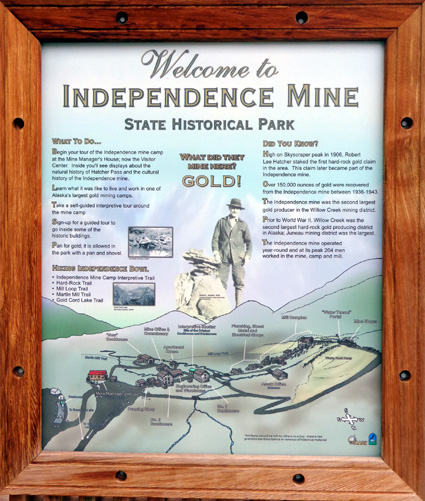
Independence Mine operated from
1936 to 1943.
The property was acquired by the
state of Alaska in 1980.
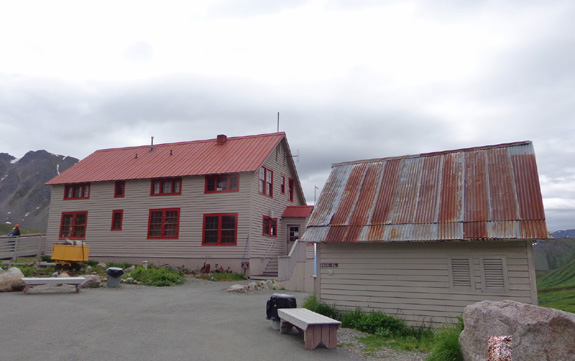
"The Big House," former home of
mine manager Walter W. Stoll, is now the park's visitor center.
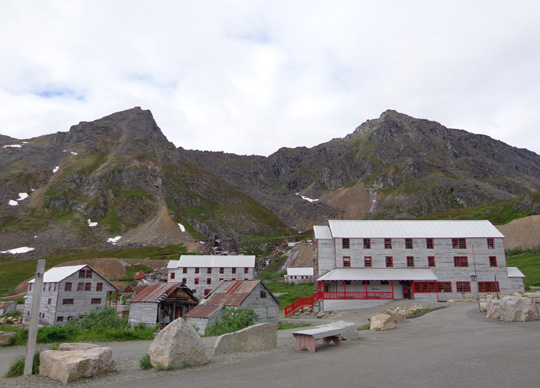
Overview of the two bunkhouses
and other smaller buildings on the lower level of the mine;
each bunkhouse housed 50-54 men who worked in the
mine year-round.
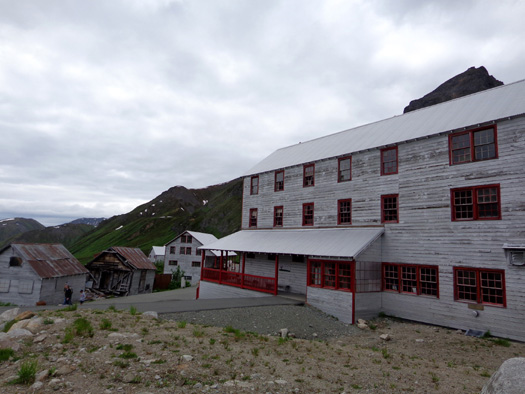
Front of Bunkhouse #2; the
bunkhouses had the best accommodations of all 38 mines in this district.
In addition to furnished bedrooms
and bathrooms, the miners had water, electricity, heat,
recreation facilities, a movie
projection room, a library, and other amenities.
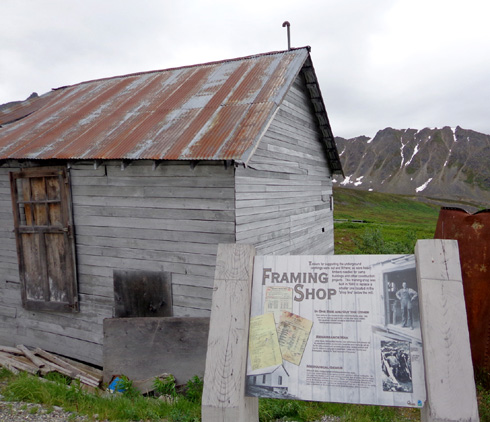
Timbers for supporting the
underground workings were cut and fitted here, as were
heavy timbers needed for camp
buildings and other construction projects.
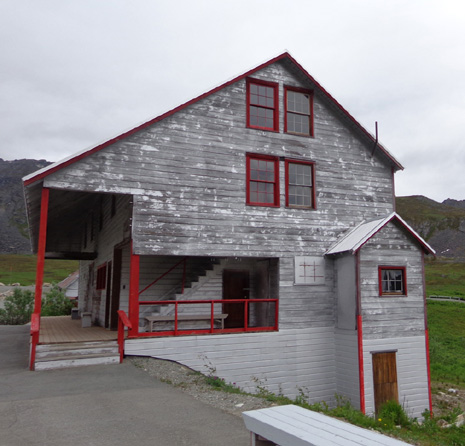
Engineering office and warehouse:
engineers mapped and diligently followed the
underground workings. The information they
gathered helped helped them follow
the gold veins and determined where the
miners would drill and blast next.
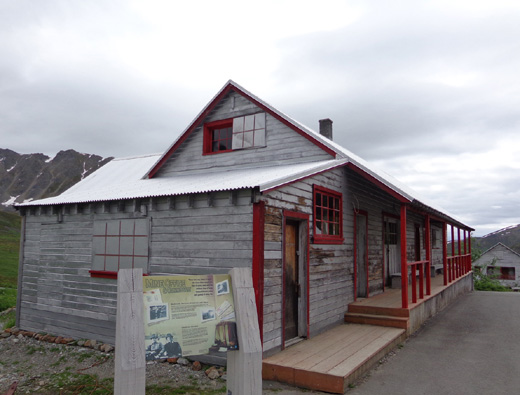
Mine office and commissary: "Banking,
buying, bunking, and bull" were carried out in this busy
activity center at the mine -- general mine
operations, purchasing, shipping, receiving, payroll, postal
services, etc. The commissary was a country store
that served miners from the entire mining district.
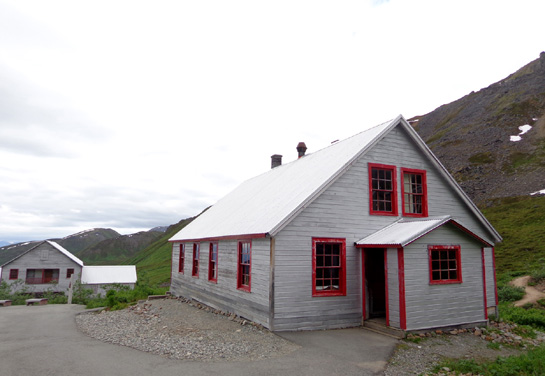
Apartment house with living quarters for
four married supervisors and their families, such as
the mill, shop, and mine foremen. Each unit
was furnished and had a modern kitchen and bathroom.
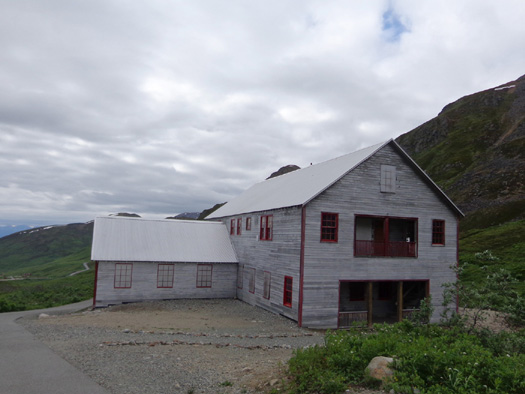
"New" cookhouse and mess hall constructed
after the original outgrew its space; it had a fully
equipped kitchen, bakery, butcher shop,
refrigerated cold storage, dry storage rooms, dishwashing
machine, dining room to seat up to 160 men,
cook's apartment, living quarters for the kitchen
staff, and two comfortable apartments for
supervisors. Huge meals were served family-style.
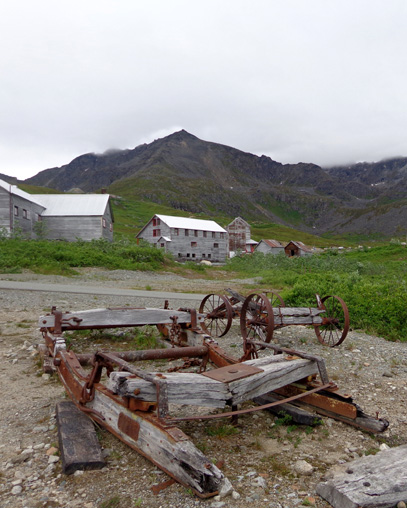
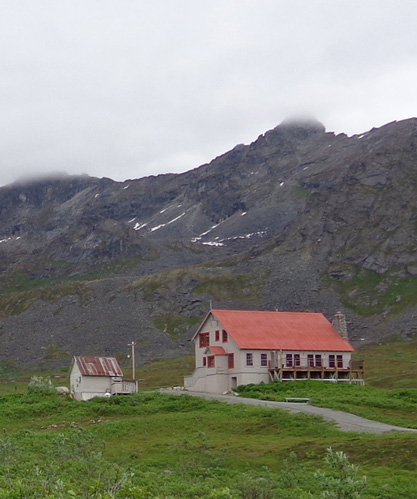
A different perspective of the general
manager's house/visitor center
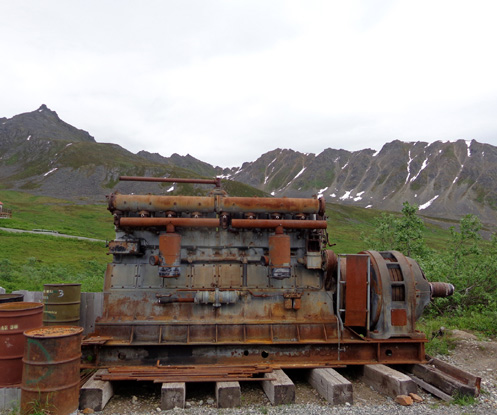
One of the diesel engines from
the powerhouse
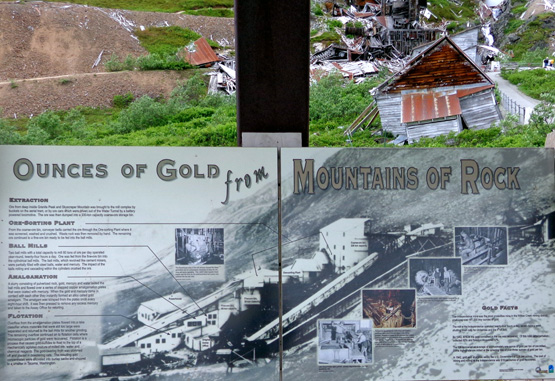
This interpretive panel and another one face the
crumbling mill complex, which was too far gone for
restoration when the state purchased the property
in 1980. This sign has exterior and interior shots of
the buildings used in the process of extraction,
ore-sorting and crushing, amalgamation, and flotation.
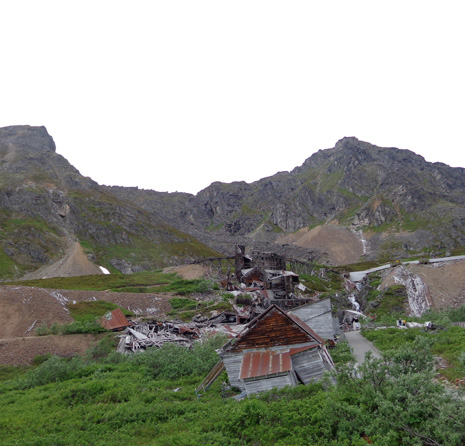
Another large sign overlooking the old mill complex
describes what can be seen on the
mountainsides. Skyscraper Peak (L) is where Robert
Hatcher first found gold in the Willow Creek
District in 1906. There are remnants of the Martin
Mine, an aerial tram, and a mine portal for
Independence Mine. In the center is a "rock
glacier." Granite Mountain is to the right.
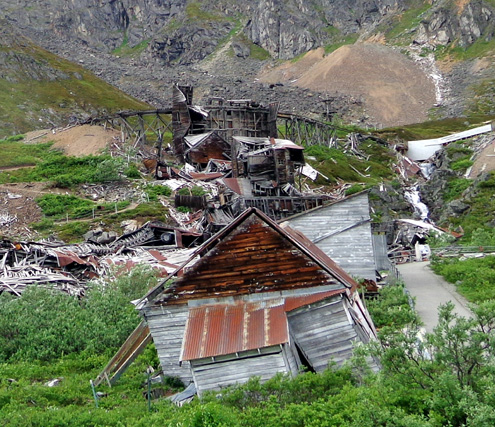
Above and below: closer view of dilapidated
shops, powerhouse,
and other buildings in the mill complex
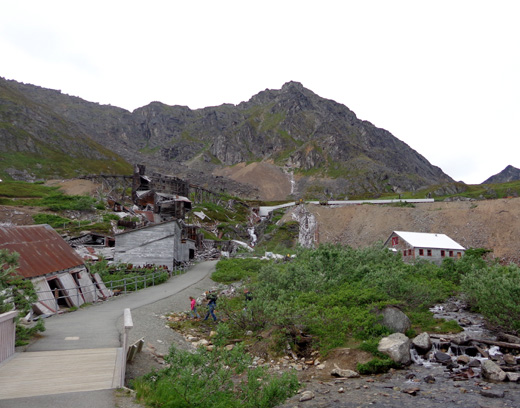
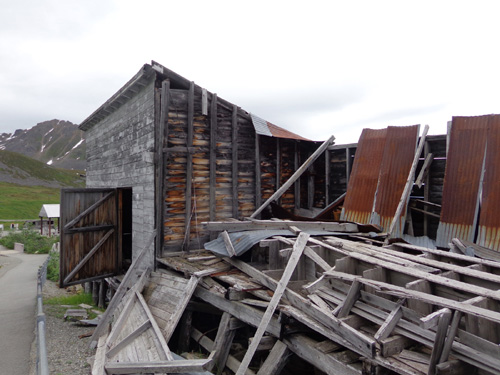
Former pipe, sheet metal, and electric shops in the
mill complex
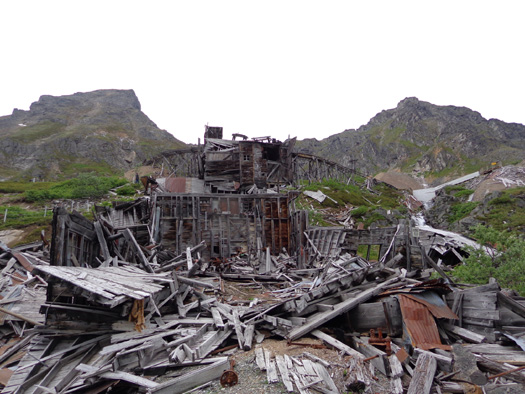
Above and below: the large powerhouse wing
had several diesel generators and air compressors to
power the massive mine operation. No other electric
power was available in this remote area of Alaska.
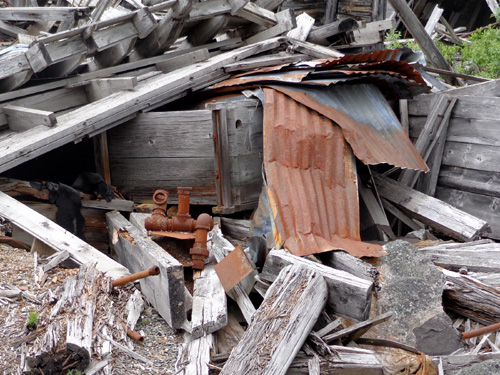
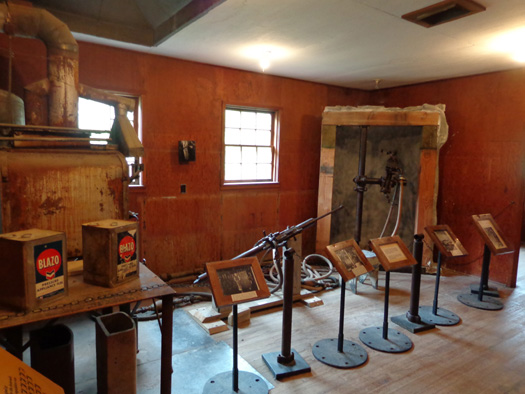
Above and below: interior of the assay office. Gold
often is not visible in the rock. Ore samples from the
and mill were chemically tested here and analyzed for the
quantity and quality of gold they contained.
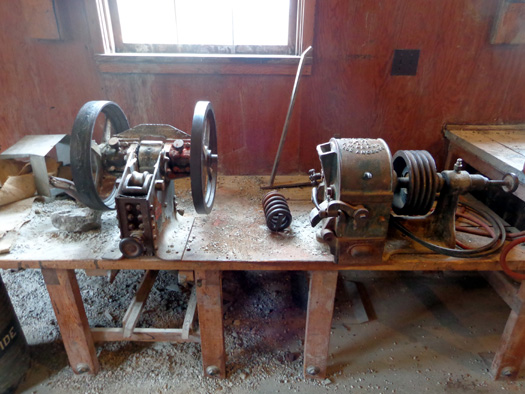
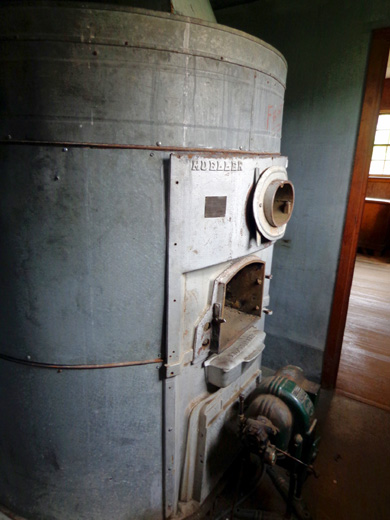
The gold was separated from mercury by heating the
amalgam to 675 F. degrees in a
retorting furnace. The mercury was vaporized,
condensed, and reused. What remained was
a crude bullion called "gold sponge" that was
shipped to Seattle for refinement.
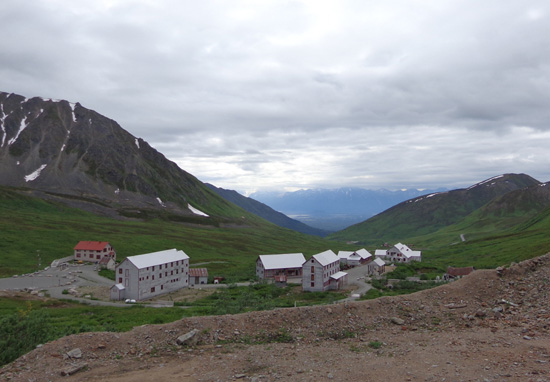
Looking down on the mostly-intact mining camp from
the second level
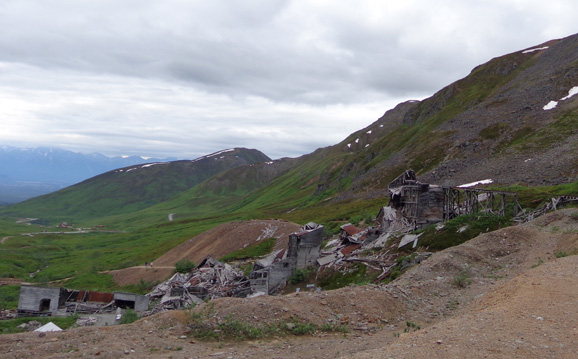
Looking down on the dilapidated mill complex from
the second level
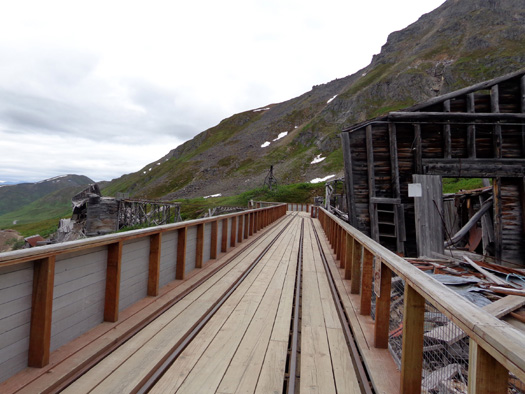
Above and below: fallen buildings along the
rail track on the second level
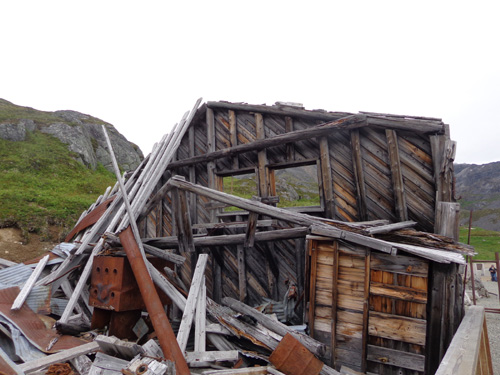
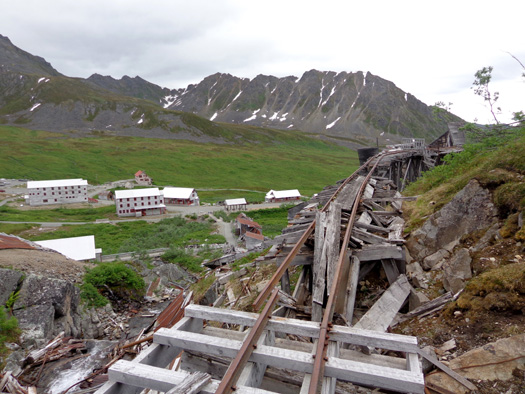
Interesting view of ruined track above the mill
complex, overlooking the standing buildings below
If you like mining history, all this is more intriguing in person.
Another popular old mine to visit in Alaska is the Kennecott Copper Mill
in Wrangell-St. Elias National Park and Preserve. It is difficult to
access, however, so we haven't gone to see it.
Next entry:
Rain
isnít predicted for tonight or tomorrow so Jim plans to ride his bike to
the Arctic Thunder air show and I plan to take Cody hiking in the Chugach Mountains
again.
Happy trails,
Sue
"Runtrails & Company" - Sue Norwood, Jim O'Neil,
and Cody the ultra Lab
Previous
Next
© 2012 Sue Norwood and Jim O'Neil